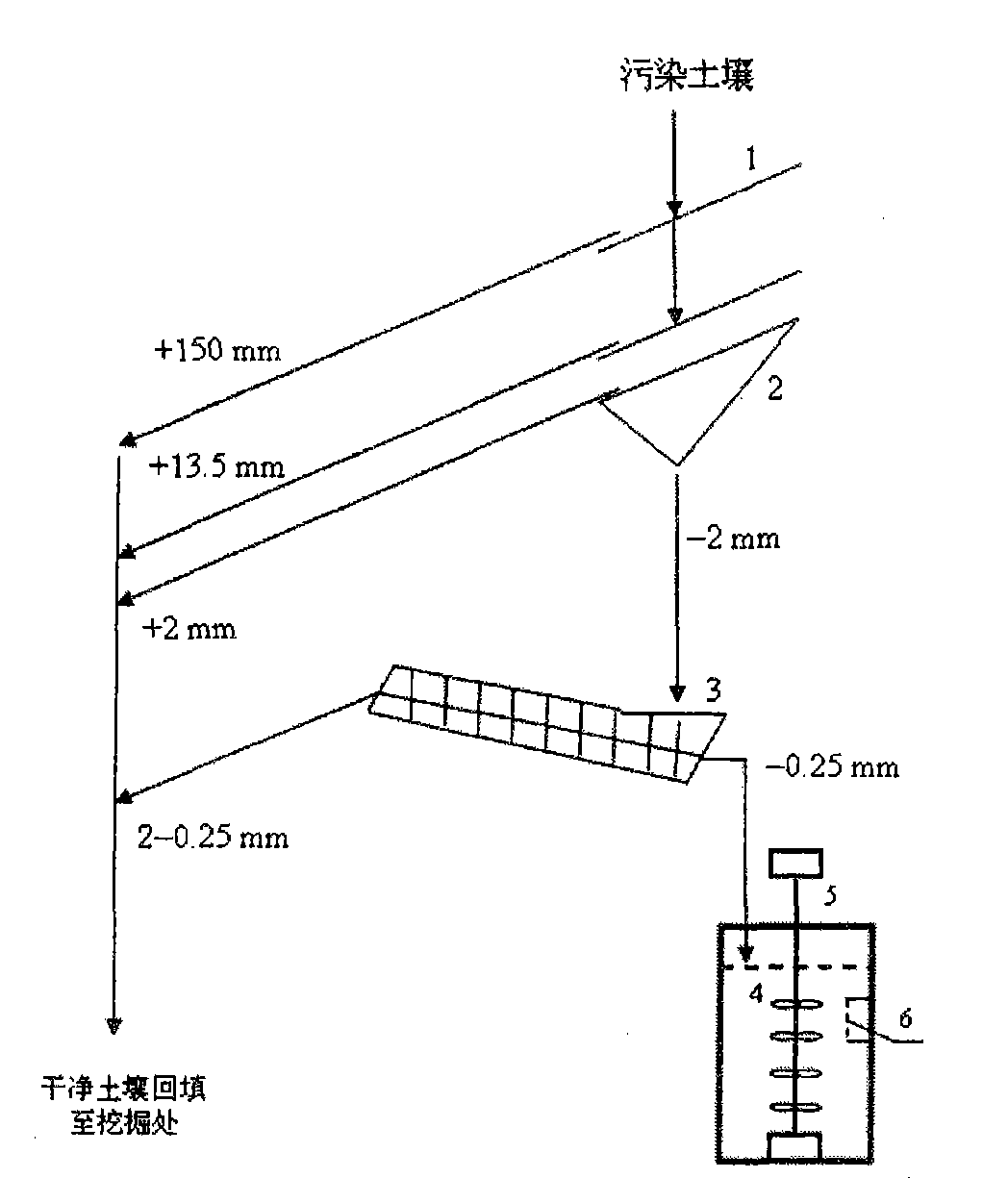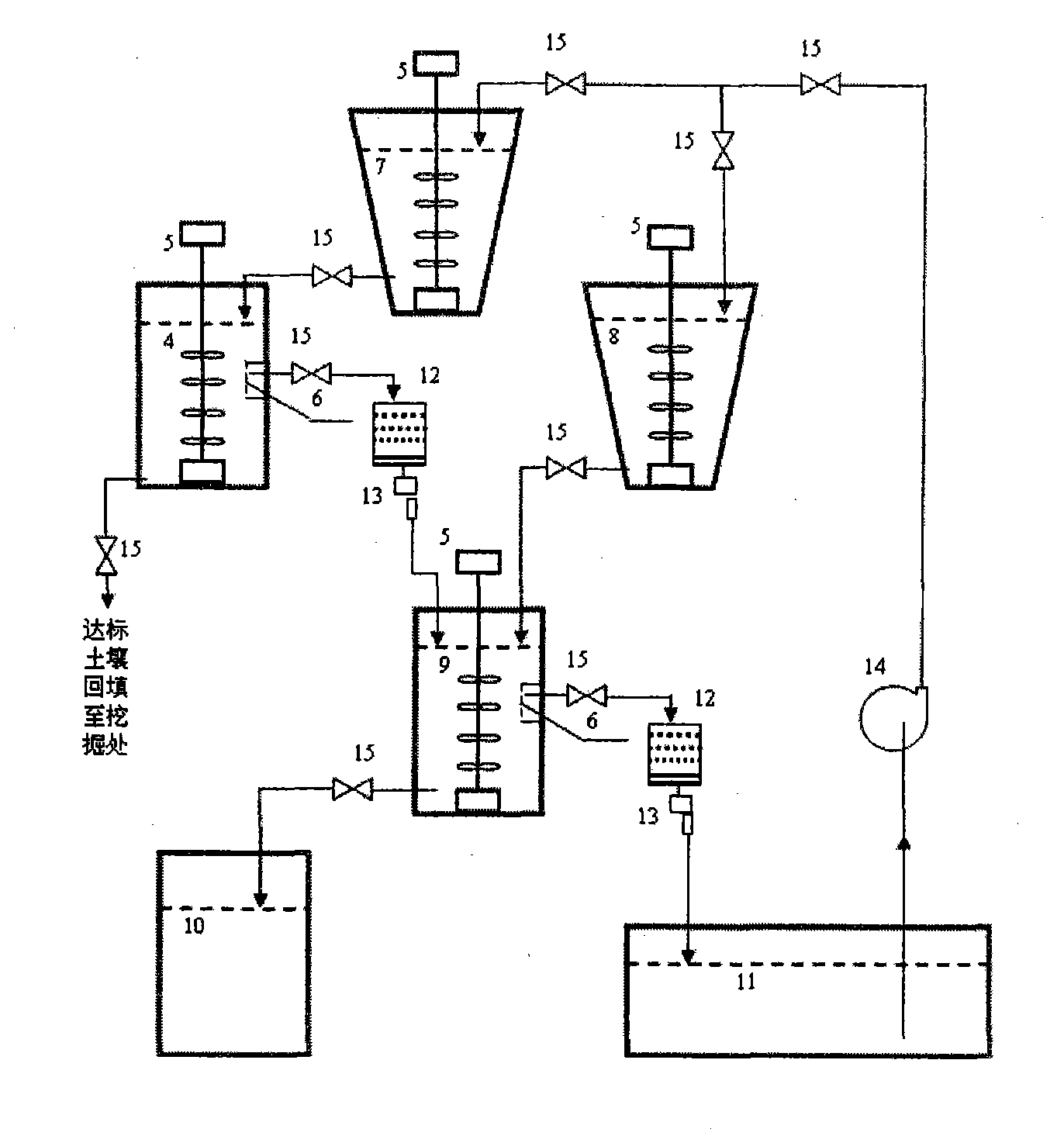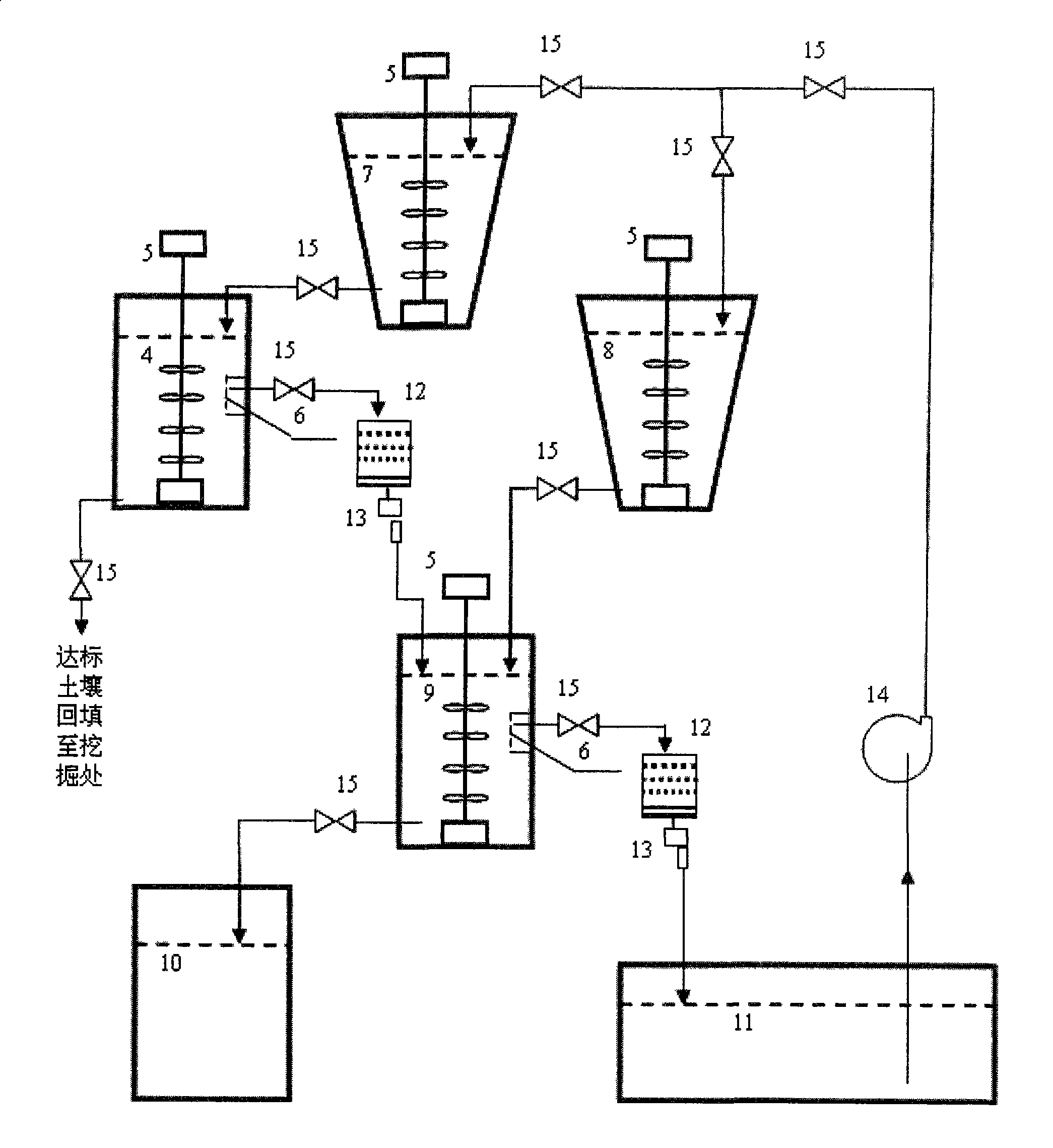Method for treating plutonium or strontium polluted soil
A technology of polluted soil and treatment method, which is applied in the field of radionuclide plutonium or strontium contaminated soil, can solve the problems that are not suitable for large-scale treatment of plutonium or strontium micro-contaminated soil, unsatisfactory treatment effect, secondary pollution, etc., and achieve soil The effect of complete restoration of quality, low cost of treatment, and efficient removal
- Summary
- Abstract
- Description
- Claims
- Application Information
AI Technical Summary
Problems solved by technology
Method used
Image
Examples
Embodiment 1
[0024] 1) Activated acidophilus Thiobacillus thiooxidans (A.t bacteria): A.t bacteria activation medium formula is 0.20gCaCl 2 2H 2 O, 0.50g MgSO 4 ·7H 2 O, 3.50g KH 2 PO 4 , 0.40g (NH 4 ) 2 Fe(SO 4 ) 2 ·6H 2 O, add tap water to 1000mL, adjust the pH value to 3.5-4.0, sterilize under 0.1MPa steam pressure for 30min, and cool. Spread 10.0 g of sulfur powder finely ground through a 60-mesh sieve in a sterile box (chamber) and sterilize it at a distance of 30 cm from the ultraviolet lamp for 30 minutes, and then add it to the sterilized solution above. Take A.t bacteria activation medium 150mL in a 500mL Erlenmeyer flask, draw 20mL A.t bacteria active bacteria solution into the activation medium, and then place it in a constant temperature shaker at 28-32°C for shaking culture. Gradually reduce the inoculum size in the same way and carry out transfer culture for 14 days. After repeated transfer culture and filtration, the active bacterial liquid of A.t bacteria (microbi...
Embodiment 2
[0038] 1) Activation of acidophilic Thiobacillus thiooxidans (A.t bacteria): Same as Example 1.
[0039] 2) Activation of sulfate-reducing bacteria (SRB bacteria): same as in Example 1.
[0040] 3) Preparation of reaction medium rich in iron and sulfur: (NH 4 ) 2 SO 4 2.50g, KH 2 PO 4 2.50g, MgSO 4 ·7H 2 O 0.50g, CaCl 2 2H 2 O 0.25g, FeSO 4 ·7H 2 O 7.00g, sulfur powder 4.85g, pyrite powder 3.00g, add tap water to 1000mL and mix well.
[0041] 4) Preparation of solubilizing aids: Na 2 S 2 o 3 ·5H 2 O 22.00g, DTPA 21.80g, formic acid 14.00mL, citric acid 9.50g, ammonium phosphate 0.40g, EDTA-Na 2 13.25g, organic fertilizer 24.20g, add tap water to 1000mL and mix well.
[0042] 5) Sieving and volume reduction of plutonium-238 slightly polluted soil: Same as Example 1.
[0043] 6) In the microbial dissolution-promoting reactor (4), mix the active bacterial liquid of A.t bacteria and the solubilizing aid at a ratio of 1.0:1.75 (v / v), and mix the solution with 111....
Embodiment 3
[0050] 1) Activation of acidophilic Thiobacillus thiooxidans (A.t bacteria): Same as Example 1.
[0051] 2) Activation of sulfate-reducing bacteria (SRB bacteria): same as in Example 1.
[0052] 3) The preparation of the reaction medium rich in iron and sulfur: the medium formula is (NH 4 ) 2 SO 4 2.50g, KH 2 PO 4 2.50g, MgSO 4 ·7H 2 O 0.50g, CaCl 2 2H 2 O 0.25g, FeSO 4 ·7H 2 O 4.00g, sulfur powder 2.10g, pyrite powder 3.50g, add tap water to 1000mL and mix well.
[0053] 4) Take strontium-90 slightly polluted soil and pass it through iron grid sieve, double plate sieve and spiral sieve in sequence, and after sifting out larger particle size soil particles, the soil particles with particle size less than 0.25mm are the contaminated soil to be treated after volume reduction.
[0054] 5) In the microbial dissolution-promoting reactor (4), put the strontium-90 slightly polluted soil into the soil by the amount of 144.93g soil / 100mL A. The reaction medium was put in, ...
PUM
| Property | Measurement | Unit |
|---|---|---|
| particle diameter | aaaaa | aaaaa |
| particle diameter | aaaaa | aaaaa |
Abstract
Description
Claims
Application Information
 Login to View More
Login to View More - R&D
- Intellectual Property
- Life Sciences
- Materials
- Tech Scout
- Unparalleled Data Quality
- Higher Quality Content
- 60% Fewer Hallucinations
Browse by: Latest US Patents, China's latest patents, Technical Efficacy Thesaurus, Application Domain, Technology Topic, Popular Technical Reports.
© 2025 PatSnap. All rights reserved.Legal|Privacy policy|Modern Slavery Act Transparency Statement|Sitemap|About US| Contact US: help@patsnap.com



